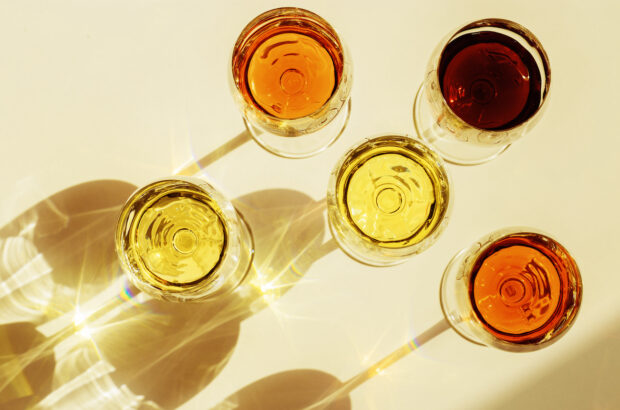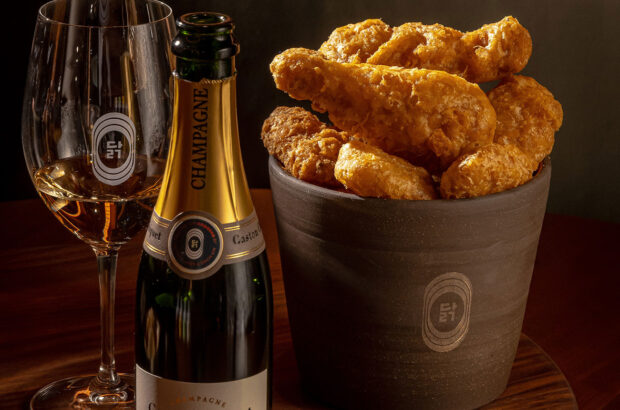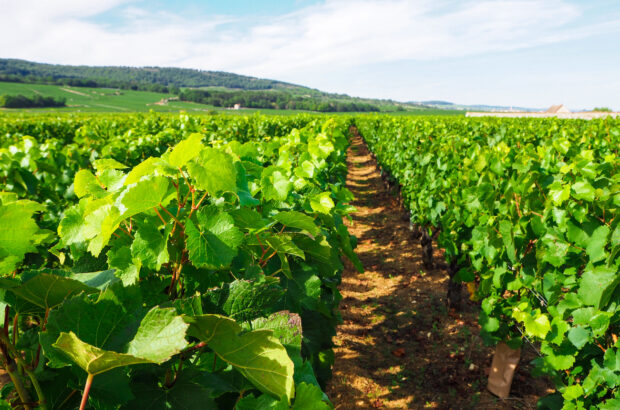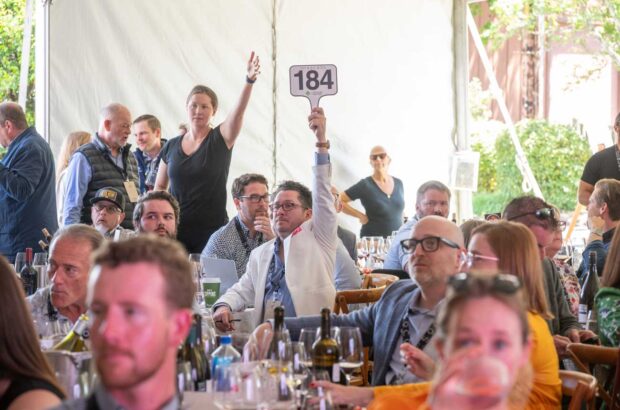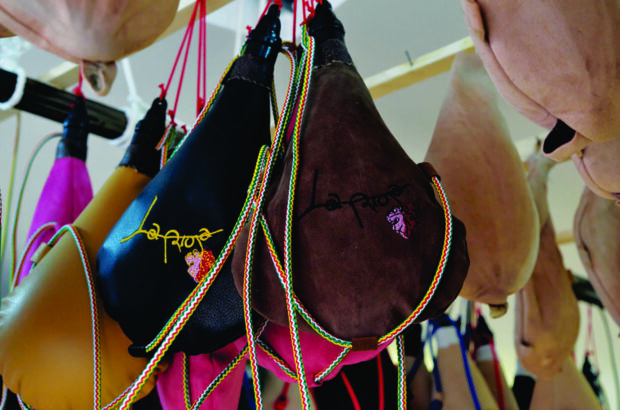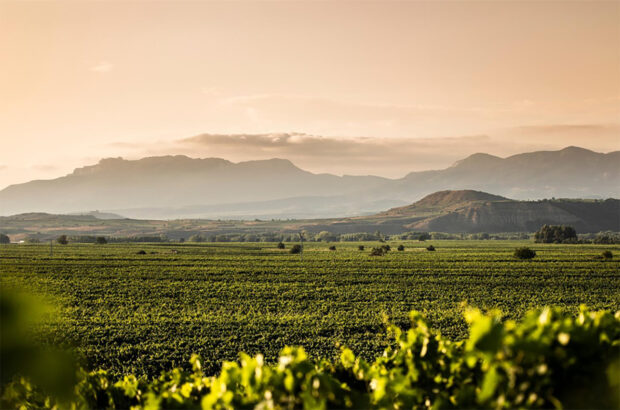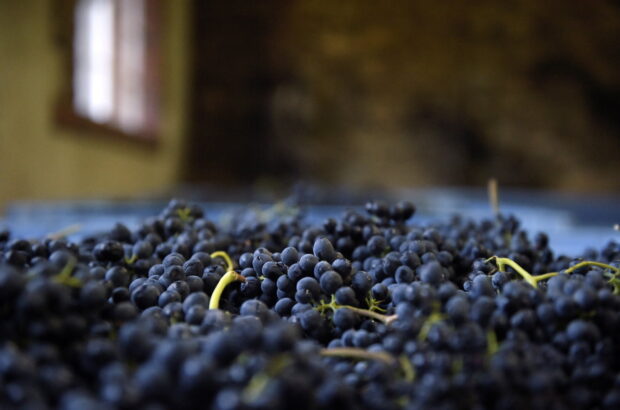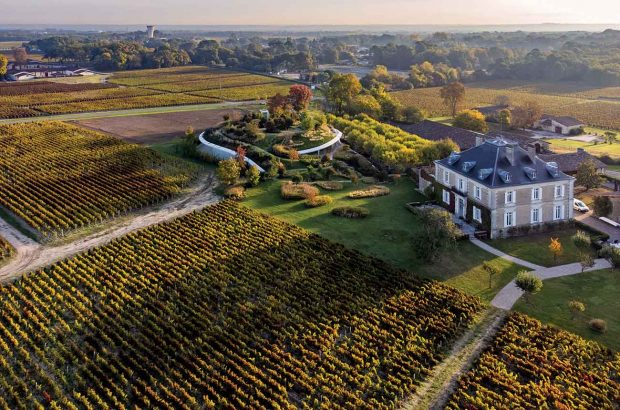These line-ups give me insight into place, time and weather, and prompt questions. How has a specific vintage evolved over the years? What behind-the-scenes dramas of frost, hailstorms or heatwaves have found their way into tastes and aromas? I treasure surprises, such as a wine from a scorching, heatwave vintage that is still fresh after a decade, and what that tells me about the site it comes from.
What ties the bottles together is the vineyard. An analytical deep dive into 10 or 20 vintages to discover the stamp of terroir reminds me of listening to an opera singer’s performances from young dazzle to a voice beginning to fade away, yet with poignant layers of complexity.
Happily, châteaux in Bordeaux, where great wines can age for a century, are fond of staging such events to show off their liquid history. During Bordeaux’s en primeur week in April 2023, I attended three brilliant verticals, at Château Haut-Bailly (grand cru classé de Graves), Clos Fourtet (St-Emilion 1er grand cru classé B), and Château Ducru-Beaucaillou (St-Julien 2ème cru classé), each followed by a fabulous meal. All charted individual journeys across time, and made clear that focus, commitment, dreams and
ambition are as important to upping quality as plenty of money – and in the 21st century, these can mitigate bad weather.

Clos Fourtet’s 2020 vintage, the final wine in a 20-year vertical tasting held last year. Credit: Marie-Amelie Journel
Graves elegance
Château Haut Bailly’s 25-year, 1998-2022 event, held in a quiet stone-walled cellar room and the château’s elegant dining room, highlighted the decades after American banker Robert Wilmers purchased the Pessac-Léognan estate. He and general manager Véronique Sanders immediately embraced an haute couture approach to viticulture. During the tasting, I could see the effects in the precision and refinement of the 2004 vintage, with another step up with the 2008, and a third in 2016. Since Wilmers’ death in 2017, his son Chris has continued his legacy.
What stood out most was the consistency of quality and style, especially in off-vintages such as 2011, with its cold, wet summer. The hallmarks in all were elegance, subtlety and balance, with a continuing upward curve of purity and precision. Recent vintages are larger in scale, with a suave opulence, but the essential personality continues to show through.
DWWA results out 19 June!
Be the first to know: Subscribe to the DWWA newsletter
St-Emilion freshness
Clos Fourtet’s 20-year vertical, 2001-2020, showed off the journey of the Cuvelier family at this St-Emilion 1GCC property since they purchased it in 2001. I could taste and smell the gradual shift towards less oak influence – down from 18 months in 80% new barrels for the 2001 vintage to 40% in barrel samples of 2022.
Rather than a simple older-to-younger line-up, wine flights were divided by style. In comparing those from lighter years together, then a group from sunny vintages, such as 2003, I was surprised to detect in all of them the freshness that comes from vines growing on the limestone plateau. Among the Les Iconiques set, a shining, deep 2001 stood out, while in Les Exceptionnels, great vintages 2005, ’10, ’16, ’18, ’19 and ’20 wowed with the kind of succulent fruit evident in the 1998 and 1989 with dinner. It was clear that the château never embraced the supercharged, opulent style favoured by (now-retired) critic Robert Parker as so many St-Emilion estates did.
Medoc seduction
I could hear church bells ringing in the distance at the beginning of Château Ducru-Beaucaillou’s 20-year vertical – from 2003, when current owner Bruno Borie took over managing his family’s property, to 2022. Older vintages poured at an extravagant four-hour lunch, such as the 64-year-old cedar-scented 1959, were serious evidence of the wines’ longevity.
Borie, too, divided wines into groups, with names such as Challenges (such as 2013), Greats (2010), Underestimated (2017), Classics (2016), Excellence: a New Era (since 2018). They were nods to other dimensions to consider during a vertical tasting. Was 2017 really underestimated? At Ducru, yes.
With the 2004 vintage, Borie began changing viticulture and winemaking, lowering yields, fine-tuning the vineyard, and investing in a new cellar. The gradual effects show up in the subsequent vintages, especially with silkier, softer tannins. And especially from 2016, the wines seem more seductive, plush and rich.
Time travel
There’s another aspect to vertical tastings that tantalises me: they carry us into the past. With Saint-Marcellin cheese at the Ducru lunch, we sipped a still intensely flavoured 1923 and a delicate, fading 1920, the year of the estate’s 200th anniversary. I savoured the latter while recalling that this was the year America gave women the right to vote.
In my glass this month
Château Smith Haut Lafitte, CCG 2010 (US$188-$220 Benchmark, K&L, Rye Brook, Saratoga Wine Exchange). I’ve attended several vertical tastings of this Pessac-Léognan red at the château, but I pulled this great vintage from my cellar for a family birthday celebration. Glossy and vibrant, with gorgeous fruit, balance and savour, it’s ageing beautifully. And I give it the edge over the much-ballyhooed 2009.




